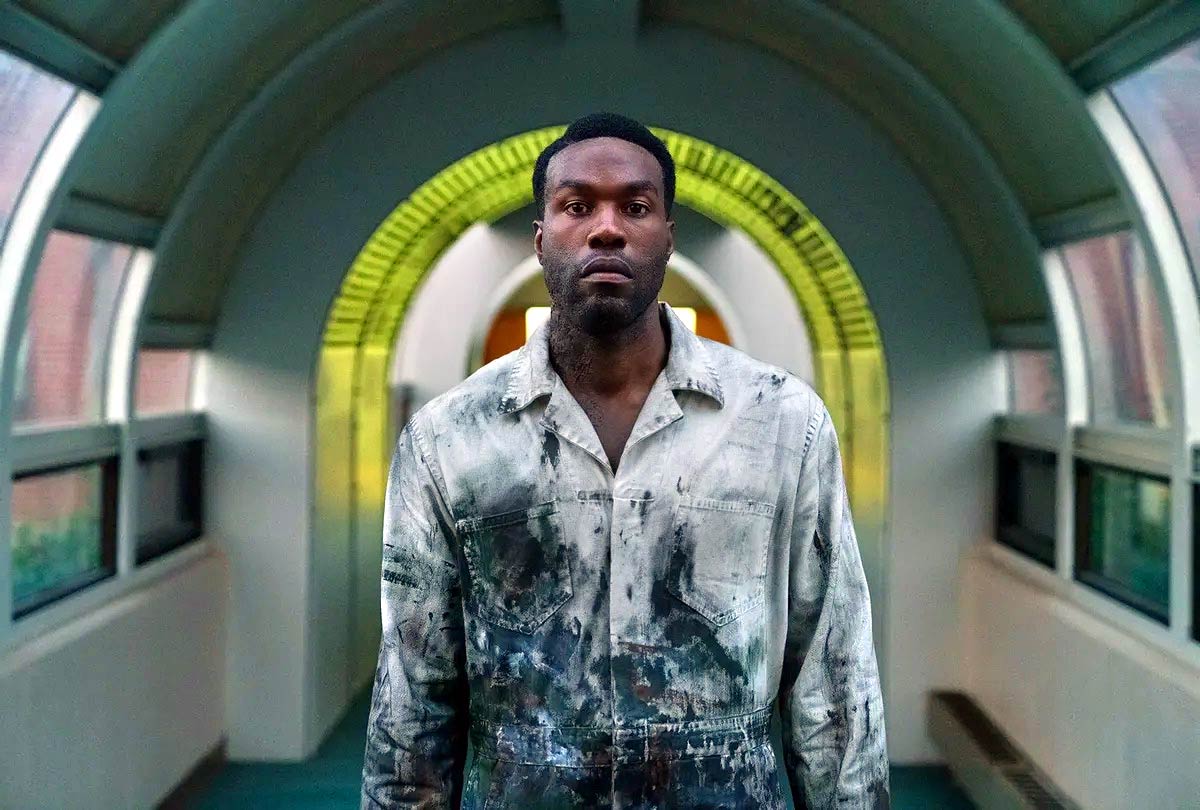Director Bernard Rose’s 1992 horror, “Candyman,” still feels somewhat like an oddity of its era. A grim poetic tome that feels neither at home with the schlocky ’80s slashers before it or post-modern “Scream” appearing several years later. A ghost story cum slasher, it sits like a misbehaving child in a family picture. The mixture of gore and intelligent social commentary did its job, however. “Candyman” became a popular franchise, spawning two sequels and making Tony Todd, the actor who played the title character, a genre superstar. Celebrated by genre fans, the anticipation towards Nia DaCosta’s contemporary translation of the film is high. This revamped continuation of the “Candyman” mythos is a feature by a young filmmaker who’s not afraid to make the material her own, yet hold a keen awareness of what made the original so devilishly appealing. That aside, DaCosta’s “Candyman” is not your typical horror reboot, and it feels very much cut from the cloth of Jordan Peele‘s social horror (a producer and co-writer on the film), steeped in Black trauma and the echoing scream of pain.
READ MORE: The 50 Best Horror Movies Of The 21st Century So Far
Talented, yet unappreciated artist, Anthony McCoy (Yahya Abdul-Mateen II), lives with his Art Gallery director girlfriend, Brianna (Teyonah Parris), in an upscale condo in Chicago. The destitute Cabrini Green towers, which housed poor African American’s are no more. However, with the towers gone, so are the urban legends and fear that surrounded the area. The upwardly mobile millennials who now occupy the space still know the name, but the pain and trauma have all but of that era have all but ebbed away. Anthony spies a chance to take advantage of Cabrini Green’s heritage through his art, much to his girlfriend’s dismay. But Anthony’s enthusiasm also digs up and unsettles something more sinister. Something which those who have lived in the projects long enough, still wanted to keep buried.
READ MORE: The 25 Most Anticipated Horror Movies Of 2021
The most startling thing about Nia DeCosta’s “Candyman” is that it has no interest in the easy scare. In fact, in a move that may raise eyebrows, the film’s approach to its horror feels like more of a tense, slow-burner than its predecessor. Jump scares are out. The grisly murders that take place feel less up close and personal than previous entries. Yet, like “Ring” or “Rosemary’s Baby” there’s a bleak, foreboding nature which festers in Candyman like a weeping wound. David Cronenberg’s remake of “The Fly” was taken as inspiration for the film, and the DNA can be found all over it. It can be seen in the creeping possession of Anthony, whose investment with the legend of the projects slowly becomes a violent obsession. The decaying wound which stems from a bee sting is a more obvious signifier. But the film also riffs on the familiar and unfamiliar to coax unease. A mirrored sequence appears to hark back to “Duck Soup” minus the comforting laughter. While many chilling moments occur with characters being glimpsed in the background a la John Carpenter‘s “Halloween.”
The film demands to be seen on a large screen as DaCosta wants you to peer into the frame and makes looking for details an unsettling notion. One of the films’ most startingly effective moments involves a camera slowly zooming away from the action, capturing everything at a distance. Daring a viewer to peer further into the image to pinpoint the violence. The film also seems to hold a desire to be careful with how it portrays some of its aggression. Playing into the larger societal story that “Candyman” is looking to tell.
That story is one of Black pain, its legacy, and the cyclical nature of segregation and violence. How traumatic stories are told and who is allowed to communicate that pain. DaCosta’s continuation of the “Candyman” saga becoming not only fascinating but terrifying in how even the events of the first time are craftily repurposed depending on who’s mentioning the story and why. This rings true in a media congested world. One where the suffering of others is flipped into new creepypastas for material gain. There are times where Candyman shares similarities with the recent horror anthology “Them,” in that even the most painful aspects should be viewed and considered to be understood. However, DaCosta has a stronger, more cathartic purpose with her imagery.
At this point, “Candyman” has moved from a Liverpudlian horror short story (Clive Barker’s “The Forbidden“) to an urban gothic 1990s horror to something even more expensive and haunting. “Black People don’t need to be summoning shit,” a character exclaims early on. But by the time “Candyman” reaches its violent yet potent finale, it suggests not only do we need to summon what we fear, but we must also find a way to confront it. [A-]
“Candyman” arrives in theaters on August 27.





